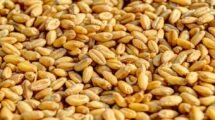Russia-Ukraine crisis: Agriculture commodity prices fell sharply in the Worldwide market
Agricultural commodity prices, notably wheat, maize, soyabean, and palm oil, fell sharply in the worldwide market over the weekend after surging on February 24 when Russia sent its soldiers into Ukraine.
The prices of most of these commodities have dropped by more than 5% as members of the North Atlantic Treaty Organization (NATO), led by the United States, and other countries critical of Moscow’s actions have failed to come to an agreement that will affect the movement of food grains including maize, wheat, and sunflower.
According to traders, concerns over the availability of certain goods have subsided in some ways. Also Read | Russia-Ukraine war may provide India an opportunity to export more wheat to global markets
The effect of crude oil
The fall in crude oil prices, notably benchmark Brent, below $100 per barrel has also contributed to the price decrease.
When Russia started on February 24 that it was sending soldiers into Ukraine, wheat and maize prices increased by more than 9%, while spot palm oil prices increased by more than 7,000 Malaysian ringgit per tonne.
On the Chicago Board of Trade (CBOT), benchmark soyabean futures finished nearly 4% down at $15.96 per bushel (₹44,025 per tonne) on Friday.
Wheat benchmark futures on the CBOT lost 8.26% of their gains from the previous day, closing at $8.495 per bushel (₹320 per tonne). However, prices are still at a nine-year high.
On the CBOT, maize futures lost 5.22 % of their gains since February 24 to settle at $6.587 a bushel (₹19,450 per tonne). Soon after Russian President Vladimir Putin’s declaration, the commodity reached an eight-month high of $7.16 per bushel before falling below $7 per bushel.
Demand for biodiesel
Prices of Palm oil fell sharply over the weekend to 6,732 MYR (Malaysian Ringgit) per tonne after reaching a high of 7,000 MYR on February 24. The benchmark May futures contract fell below 6,000 MYR to 5,984 MYR.
During the weekend, March contracts of canola, per variety of rapeseed, fell by more than 5% to $1,008.10 per tonne on the Intercontinental Exchange.
Canola and palm oil prices have risen due to two reasons. One, market participants were concerned that the supply of sunflower oil from Ukraine, the key source, might be disrupted. Second, anytime crude oil prices reach about $100 per barrel, both of these oils are diverted for the manufacturing of biodiesel.
Wheat and maize prices have also risen on worries that supplies from Russia and Ukraine, both significant exporters on the global market, may be disrupted.
There are two sources of concern. The first is that Russia may block Ukraine from exporting these goods, and the second is that any sanctions imposed by NATO and its allies may have an impact on Russian supplies to the world market.
Share of world exports from Moscow and Kyiv
Even barley prices have risen as Russia (4.96 million tonnes or mt) and Ukraine (5.04 mt) account for more than 40% of world supplies.
In the case of sunflower oil, Ukraine (6.86 mt) and Russia (3.2 mt) account for over half of the total global supply of 11.24 mt. Again, Moscow (37.26 mt) and Kyiv (18.05 mt) account for more than 25% of global wheat exports.
In terms of maize, both of these countries (Russia 2.28 mt and Ukraine 27.95 mt) have sent out approximately 10% of world exports of 305.54 mt.
India as a potential export market
The surge in commodity prices has benefited Indian farmers to some extent. Prices rose as tensions between Moscow and Kyiv rose, culminating on the day Putin announced his decision. However, rates fell somewhat over the weekend.
This is because India is viewed as a supplier capable of meeting short-term demands and supplying in tiny amounts for such urgent needs. It can, in particular, suit the demands of countries in South Asia, South-East Asia, and West Asia, in addition to Africa.
Other benefits that New Delhi enjoys include price competitiveness and adequate supplies in the country, which have been boosted by the record production of these crops.
Oil imports are becoming expensive
Oilseed prices, on the other hand, have risen as imports of oils such as palm, soyabean, and sunflower become more expensive. Also Read | India is now world’s largest exporter of cucumber, gherkins worth $223 million FY-21
The global market’s reaction to the Ukraine conflict was mirrored in local agriculture markets as well. Wheat prices reached ₹2,000 per quintal last week, with Madhya Pradesh accounting for the highest arrival of 63,713 tonnes.
Maize prices are hovering around ₹1,900 per quintal, with Madhya Pradesh once again accounting for the majority of arrivals (19,043). Soybean prices are solidly above ₹6,000 per quintal in several agricultural markets, and mustard rates are similarly firm around these levels.
Last week, Maharashtra and Madhya Pradesh accounted for more than 90% of soyabean arrivals, while Rajasthan, Madhya Pradesh, and Gujarat accounted for more than 80%.















Add Comment